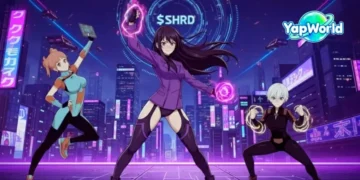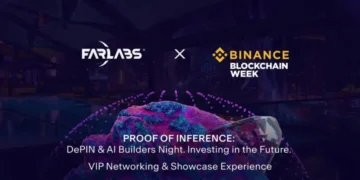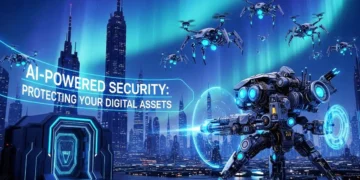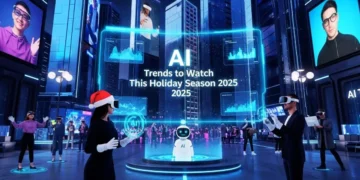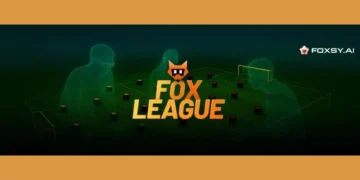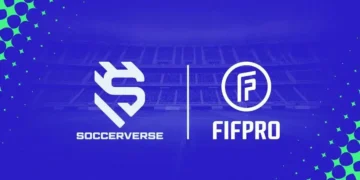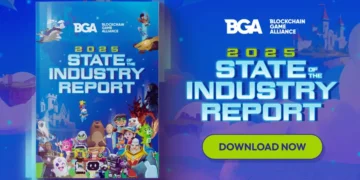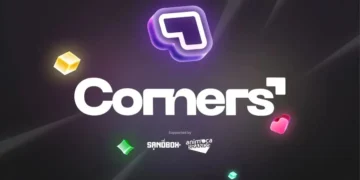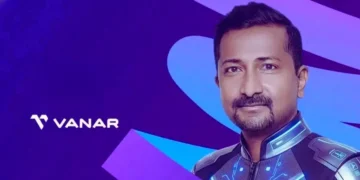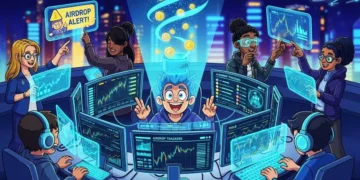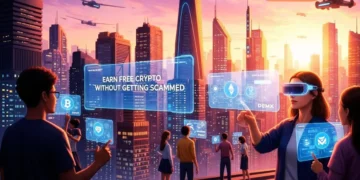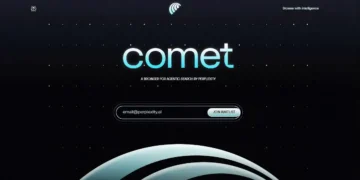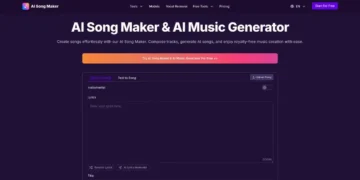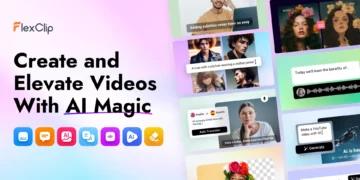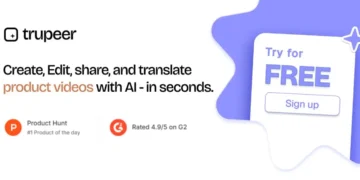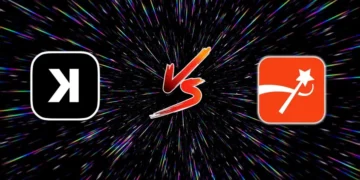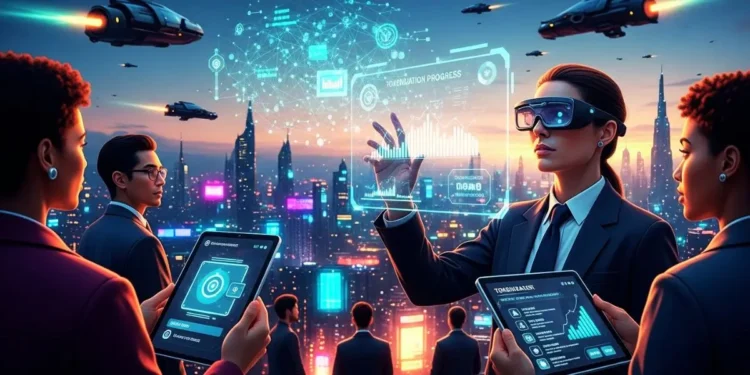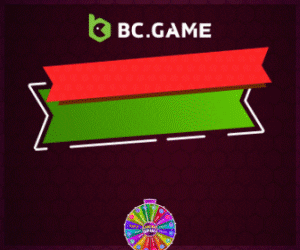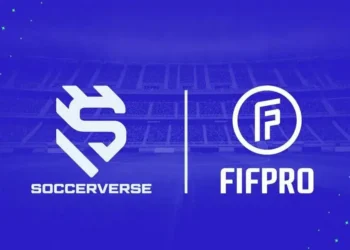Imagine being able to own a fraction of a Manhattan skyscrapper, trade gold bars instantly 24/7, or invest in U.S. Treasury bills using your crypto wallet. This isn’t financial science fiction—it’s happening right now through Real-World Asset (RWA) tokenization, the groundbreaking process of converting physical assets into digital tokens on the blockchain. What traditional finance kept behind velvet ropes for centuries is now becoming accessible to everyone through RWA tokenization.
The market potential is staggering. According to Boston Consulting Group and ADDX, the RWA tokenization market could reach a jaw-dropping $16 trillion by 2030—representing nearly 10% of global GDP . Even more conservative estimates from McKinsey still project around $2 trillion in tokenized market capitalization by 2030 . But what’s driving this explosive growth, and why should you care?
When BlackRock CEO Larry Fink states that “the next generation for markets, the next generation for securities, will be the tokenization of securities,” it’s clear this isn’t just another crypto trend . We’re witnessing the early stages of what could become the largest capital migration in financial history, with the RWA market already growing 380% in just three years to reach $24 billion .
But what exactly does this mean for you as an investor, entrepreneur, or simply someone curious about the future of finance? In this comprehensive guide, we’ll explore how RWA tokenization is bridging traditional finance with Web3, creating unprecedented opportunities for investors of all sizes. Have you ever wondered what it would be like to invest in assets previously reserved for the ultra-wealthy? Let’s find out.
What Are Real-World Assets (RWAs) in Web3?
Understanding the Basics of RWA Tokenization
At its core, Real-World Asset (RWA) tokenization is the process of creating digital tokens on a blockchain that represent ownership of physical or traditional financial assets. Think of it as creating a “digital twin” of something valuable from the physical world that can now be traded, divided, and managed on-chain . These RWA tokens act as provable digital certificates of ownership that have real market value .
But what exactly qualifies as a “real-world asset”? Essentially, if it has value in the traditional economy, it can likely be tokenized. The most common categories include:
Real estate: Residential and commercial properties, land, and mortgages
Financial instruments: Bonds, equities, treasury bills, and private credit
Commodities: Gold, oil, agricultural products, and precious metals
Art and collectibles: Fine art, vintage wines, rare sneakers, and luxury goods
Intellectual property: Royalty streams, music rights, and patent licenses
Invoices and receivables: Future revenue streams from businesses
Here are some common examples:
Real Estate: A token could represent full ownership of a property or, more powerfully, a fractional share of a commercial building or rental apartment complex.
Private Credit & Invoices: Businesses can tokenize their future revenue or outstanding invoices, gaining immediate access to capital from DeFi investors who earn a yield in return.
Commodities: Physical gold, oil, or agricultural products can be tokenized, allowing people to invest in them without the logistical nightmare of physical storage and transport.
Government & Corporate Bonds: One of the fastest-growing areas is the tokenization of secure financial instruments like U.S. Treasury bills, allowing crypto-native treasuries and DAOs to earn stable, real-world yield.
Art & Collectibles: A famous painting or a rare bottle of wine can be fractionalized, allowing multiple investors to co-own a piece of cultural and financial value.
How an Asset Goes from Physical to Digital
The magic of tokenization in Web3 isn’t random; it follows a structured, three-stage process to ensure the digital token accurately and legally represents the underlying asset.
Off-Chain Formalization: This is the foundational legal and financial groundwork. Before any token is created, the asset’s value, ownership, and legal status must be concretely established. This involves property appraisals, legal registrations, and creating clear documentation that links the physical asset to its future digital counterpart. Trust starts here.
Information Bridging: Once the asset is legally and financially secured, its data—value, ownership records, legal status—is digitized. This information needs to be securely transmitted to the blockchain. This is often accomplished using a “blockchain oracle,” a secure service that feeds external, real-world data to smart contracts. A project like Chainlink (LINK) is an industry leader here, acting as a vital bridge between the off-chain and on-chain worlds.
Token Minting and Distribution: With the legal framework in place and the data bridge established, a smart contract is used to “mint” (create) the digital tokens on a chosen blockchain. These tokens, which now represent legal ownership of the asset, are then distributed to investors and can be traded, used as collateral, or integrated into other DeFi applications.
RWA vs. Crypto vs. NFT: Understanding the Key Differences
The world of digital assets is filled with jargon that can be confusing. Is an RWA token just another cryptocurrency? Is it the same as an NFT? The answer to both is a firm no. Understanding these distinctions is crucial for any savvy investor.
The Difference Between RWA and Crypto
The primary distinction lies in what gives them value. A difference between RWA and crypto is that traditional cryptocurrencies like Bitcoin or Ether are purely digital assets; their value is derived from factors like network utility, tokenomics (scarcity), and market demand or speculation. They are not backed by any underlying physical asset.
RWA tokens, on the other hand, are fundamentally different. Their value is directly tethered to the valuation of the real-world asset they represent. If a token represents an ounce of gold, its price will track the market price of gold. This backing provides a level of stability and a valuation floor that is absent in most purely digital cryptocurrencies, making RWAs an attractive option for investors looking to diversify away from crypto’s inherent volatility.
The Difference Between RWA and NFT
This is where it gets a little more nuanced. The difference between RWA and NFT is best understood by looking at what the token represents. An NFT (Non-Fungible Token) is a unique digital token that proves ownership of a specific item, which can be digital or physical.
When an NFT represents a digital-only asset (like a piece of digital art, a tweet, or an in-game item), it is not an RWA token because there is no tangible, real-world counterpart.
However, when an NFT represents ownership of a unique physical asset (like a specific house, a particular painting, or a signed jersey), it functions as an RWA token. In this case, the non-fungible nature of the NFT is perfect for representing a one-of-a-kind real-world item.
So, you can think of it this way: some NFTs are a type of RWA token, but not all NFTs are. The key is whether the token is linked to an asset in the physical world.
RWA vs. Traditional Crypto: What’s the Difference?
You might be wondering how RWA tokens differ from the cryptocurrencies you already know. While both use blockchain technology, they serve fundamentally different purposes.
Traditional crypto tokens like Bitcoin or Ethereum are native digital assets whose value derives from network adoption, utility, and scarcity . In contrast, RWA tokens are digital representations of existing real-world assets, with their value tied directly to the underlying physical asset .
This crucial distinction means that RWA tokenization doesn’t create new value but rather makes existing value more accessible and liquid. It’s the difference between creating a new form of money versus creating a more efficient way to own and trade traditional assets.
Why RWA Tokenization is Revolutionizing Finance
Solving the Liquidity Problem
One of the most significant benefits of RWA tokenization is solving the liquidity problem that has plagued certain asset classes for centuries. Consider real estate—historically one of the most illiquid investments, requiring months or years to sell and convert to cash. Through fractional ownership enabled by tokenization, high-value assets can be divided into smaller, more affordable units that can be traded almost instantly .
This enhanced liquidity doesn’t just benefit sellers; it creates more efficient markets where price discovery happens faster and assets can be valued more accurately. Have you ever had to pass on an investment opportunity because the minimum buy-in was too high? Fractional ownership through RWA tokenization eliminates this barrier.
Democratizing Access to Premium Investments
Traditional finance has always had velvet ropes separating “accredited investors” from everyone else. RWA tokenization is tearing down those barriers, creating a more inclusive financial system where anyone with an internet connection can access investment opportunities previously reserved for the wealthy .
Imagine being able to build a diversified portfolio that includes slices of prime Manhattan real estate, U.S. Treasury bonds, fine art, and gold reserves—all with relatively small capital allocations. This isn’t a distant future scenario; platforms like RealT, Ondo Finance, and MakerDAO are already making it possible today .
Operational Efficiency and Transparency
The traditional financial system is riddled with intermediaries, manual processes, and settlement delays. Most securities still settle on a T+2 basis (two days after the trade), requiring multiple intermediaries and creating counterparty risk .
RWA tokenization streamlines this process through smart contracts that automate everything from dividend distributions to compliance checks. Transactions can settle almost instantly, 24/7/365, and all ownership records are maintained transparently on an immutable ledger . This operational efficiency translates to significant cost savings and reduced errors.
Table: Traditional Finance vs. Tokenized RWAs
| Aspect | Traditional Finance | Tokenized RWAs |
|---|---|---|
| Settlement Time | T+2 (2 business days) | Near-instant |
| Market Hours | Business hours only | 24/7/365 |
| Accessibility | Often limited to accredited investors | Global, permissionless access |
| Transparency | Opaque processes | Transparent on-chain records |
| Fractional Ownership | Difficult and expensive | Built into the technology |
How RWA Tokenization Actually Works: A Step-by-Step Guide
The Tokenization Process
Transforming a physical asset into a digital token involves several crucial steps that bridge the legal and technical worlds:
Asset Selection and Sourcing: The process begins with identifying a suitable real-world asset for tokenization. This could be anything from a commercial building to a portfolio of government bonds. The asset must be properly valued and legally clear for tokenization .
Legal Structuring: This is where the crucial legal framework is established. Typically, the asset is placed in a special purpose vehicle (SPV) or trust, which holds the legal title. The tokens then represent ownership in this legal entity . This ensures that your digital token has enforceable rights to the underlying asset.
Token Creation and Smart Contract Development: Developers create the digital tokens using established standards like ERC-20 for fungible assets or ERC-721 for unique assets. The smart contracts governing these tokens encode the business logic—rules for transfers, dividend distributions, and other functionalities .
Custody and Asset Backing: The physical asset must be securely stored and managed. This often involves regulated custodians who safeguard the asset and ensure the RWA tokens remain properly backed . For instance, tokenized gold projects like Tether Gold store physical gold in Swiss vaults .
Oracle Integration: Since blockchains can’t access external data directly, oracle networks like Chainlink play a crucial role in bringing real-world information on-chain. This might include price feeds, interest rates, or verification of off-chain events .
Distribution and Compliance: Finally, the tokens are distributed to investors through public sales or private placements. Throughout this process, KYC (Know Your Customer) and AML (Anti-Money Laundering) checks are implemented to ensure regulatory compliance .
The Role of Blockchain Infrastructure
Not all blockchains are created equal when it comes to RWA tokenization. Different types of blockchains offer various advantages:
Public Blockchains (like Ethereum): Offer maximum decentralization and transparency but may face scalability challenges .
Private Blockchains: Provide greater control and privacy but sacrifice some decentralization .
Consortium Blockchains: Operated by multiple organizations, offering a middle ground between public and private models .
Hybrid Blockchains: Combine elements of both public and private blockchains, offering flexibility for different use cases .
Most RWA tokenization projects currently use Ethereum or other EVM-compatible chains due to their robust smart contract capabilities and extensive developer ecosystems. However, specialized chains like Plume are emerging specifically optimized for RWAs .
Major RWA Projects and Tokens Leading the Revolution
The RWA Ecosystem Landscape
The RWA tokenization space has evolved from theoretical concept to practical implementation, with several projects demonstrating real-world traction and growing tokenized asset values. Here are some of the most impactful projects pioneering this space:
MakerDAO (MKR): Originally known for its DAI stablecoin, MakerDAO has become a significant player in RWAs by allocating billions to tokenized U.S. Treasury assets. Its revenue from RWAs highlights how traditional yields can be brought into DeFi .
Ondo Finance (ONDO): Often described as a decentralized investment bank, Ondo focuses on tokenizing traditional financial assets like U.S. Treasury bonds and quality corporate debt, making them accessible to on-chain investors .
Chainlink (LINK): While not a direct RWA token issuer, Chainlink’s decentralized oracle network provides the critical infrastructure that connects real-world data to blockchain environments. Its Proof of Reserve services and price feeds are essential for maintaining the integrity of tokenized assets .
RealT: This platform specializes in tokenizing U.S. real estate, allowing global investors to purchase fractional ownership in rental properties and earn income from rent distributions .
BlackRock’s BUIDL: The world’s largest asset manager launched its first tokenized fund, BUIDL, on Ethereum in 2024, offering qualified investors on-chain access to U.S. dollar yields through tokenized Treasuries .
Table: Leading RWA Tokens and Their Focus Areas
| Project/Token | Primary Focus | Notable Achievement |
|---|---|---|
| Maker (MKR) | Tokenized Treasuries | Billions allocated to RWAs |
| Ondo (ONDO) | Tokenized bonds and securities | Regulated, institutional-grade products |
| Chainlink (LINK) | RWA infrastructure | Critical oracle services for data feeds |
| Pendle (PENDLE) | Yield tokenization | Innovative yield-trading products |
| Algorand (ALGO) | RWA-focused blockchain | ASA standard for tokenized assets |
Challenges and Limitations in RWA Tokenization
Regulatory Uncertainty and Compliance
Despite its potential, RWA tokenization faces significant regulatory challenges. The legal status of tokenized assets varies widely across jurisdictions, creating a complex patchwork of regulations that global platforms must navigate .
Different assets may be classified as securities, commodities, or something entirely new, each carrying its own regulatory requirements. Implementing KYC and AML procedures on decentralized platforms presents technical challenges while remaining essential for regulatory compliance .
Technological Barriers and Security Concerns
The “blockchain trilemma”—balancing decentralization, security, and scalability—remains a challenge for RWA platforms . Additionally, connecting off-chain assets to on-chain tokens creates unique security vulnerabilities, with over $2.5 billion lost in security breaches across blockchain bridges .
Smart contract risks, oracle manipulation possibilities, and custody solutions for physical assets all represent technological hurdles that the industry continues to address through improved security practices and insurance solutions.
Market Adoption and Liquidity
Creating tokens is one thing; creating liquid markets for them is another. Many RWA projects struggle with achieving sufficient trading volume and market depth, especially in their early stages. This chicken-and-egg problem requires careful ecosystem development and partnership strategies.
Furthermore, educating traditional investors about the benefits and mechanics of tokenized assets remains an ongoing challenge, though institutional participation from names like BlackRock and Franklin Templeton is helping build credibility.
Real-World Examples in Action: What Does RWA Look Like Today?
The RWA ecosystem is no longer just theoretical; it’s a vibrant, growing market with billions of dollars already tokenized. Here are some real RWA tokens examples and platforms that are leading the charge:
Tokenized Real Estate: The St. Regis Aspen Resort in Colorado made headlines when it tokenized ownership, raising $18 million in 2018. Platforms like RealT now allow investors to buy fractional shares of rental properties across the U.S., earning passive income directly in their crypto wallets. This provides a clear example of a real world asset tokenization in practice.
Tokenized Government Bonds: Ondo Finance (ONDO) has become a dominant player by tokenizing short-term U.S. Government bonds. Their OUSG token allows DeFi users to access the stable, low-risk yield of U.S. Treasuries, a move that has attracted significant institutional interest, including from entities like BlackRock. Matrixdock is another platform excelling in this area.
Tokenized Private Credit: Centrifuge (CFG) connects DeFi liquidity with real-world businesses by allowing them to tokenize assets like invoices and royalties. This allows small and medium-sized enterprises to get financing without a traditional bank, while investors can fund these assets and earn a competitive yield.
Global Impact Lending: Goldfinch (GFI) is a protocol that provides loans to businesses in emerging markets. By tokenizing these loan pools, Goldfinch allows DeFi users to fund everything from small business lenders in Kenya to agricultural cooperatives in India, proving that RWAs can be a powerful tool for global financial inclusion.
The Engine Room: Blockchains & Cryptos Powering the RWA Revolution
The RWA ecosystem relies on a robust technical foundation to function securely and efficiently. This includes the underlying blockchain networks and the specialized protocols built on top of them.
What are the 4 Types of Blockchain?
Not all blockchains are created equal. The choice of blockchain can have major implications for security, transparency, and regulatory compliance. There are broadly 4 types of blockchain :
Public Blockchains: These are permissionless and fully decentralized, like Ethereum or Bitcoin. Anyone can join the network, view the ledger, and verify transactions. They offer maximum transparency but can present challenges for assets requiring regulatory control.
Private Blockchains: These are permissioned networks controlled by a single organization. They are often used for internal enterprise solutions where privacy and control are paramount. The controlling entity sets the rules and determines who can participate.
Consortium Blockchains: A semi-decentralized model where a blockchain is governed by a group of organizations rather than just one. This is ideal for collaboration between multiple companies in the same industry, as it spreads the responsibility of maintaining the network.
Hybrid Blockchains: These combine elements of both public and private chains. They allow organizations to maintain a private, permission-based system while still connecting to the public blockchain when needed. This allows for sensitive data to remain confidential while still leveraging the security and interoperability of a public network.
For RWAs, hybrid and private blockchains are often favored by institutions that need to comply with strict regulations, while public blockchains are used for assets targeting a broader, decentralized investor base.
Which Crypto is Best for RWA? Top Contenders
While many platforms contribute, a few stand out when answering the question, “which crypto is best for RWA?” These protocols provide the essential infrastructure that makes the entire ecosystem work:
Chainlink (LINK): Arguably the most critical piece of infrastructure. Chainlink is a decentralized oracle network that securely connects smart contracts with off-chain data. For RWAs, this is non-negotiable. Its “Proof of Reserve” feeds provide live, on-chain verification that the tokenized assets are fully backed by their real-world counterparts, creating a foundation of trust.
Algorand (ALGO): This layer-1 blockchain has focused on RWA tokenization from its early days. Its low fees, fast transaction finality, and built-in compliance features (like asset whitelisting) make it a preferred choice for institutions and governments looking to issue regulated tokens on a public ledger.
Ondo Finance (ONDO): As a leader in tokenized U.S. Treasuries, Ondo has demonstrated a clear product-market fit by bringing safe, institutional-grade yield to the on-chain world. Its institutional-first approach and partnerships have made it a go-to protocol for stable yield in DeFi.
Centrifuge (CFG): By focusing on tokenizing business receivables, Centrifuge has unlocked a vital source of liquidity for real-world businesses and a unique source of yield for DeFi investors. Its integration with MakerDAO highlights its deep roots and trust within the crypto ecosystem.
The Future of RWA Tokenization: Trends and Predictions
Exponential Growth Projections
The growth trajectory for RWA tokenization appears exceptionally strong across multiple forecasts. While Boston Consulting Group projects a $16 trillion market by 2030 , Standard Chartered offers an even more ambitious prediction: $30 trillion by 2034 . Even the more conservative McKinsey estimate of $2 trillion still represents massive growth from current levels .
The tokenized U.S. Treasury market alone has demonstrated this explosive growth, expanding more than 10x since early 2023 to exceed $1.2 billion , with Franklin Templeton’s BENJI fund now holding $360 million in assets .
Institutional Adoption Accelerating
What was once dominated by crypto-native projects is now seeing massive institutional participation. BlackRock’s BUIDL fund has grown to $2.9 billion , while traditional financial institutions like HSBC Singapore, ANZ Bank, and DTCC are actively exploring and implementing tokenization solutions .
As Larry Fink stated in January 2024: “We believe the next step going forward will be the tokenization of financial assets, and that means every stock, every bond will be on one general ledger” . This institutional endorsement is crucial for mainstream adoption.
Technological Evolution and Standardization
The technology underpinning RWA tokenization continues to evolve rapidly. We’re seeing emergence of:
RWA-specific blockchains like Plume that optimize for compliance and asset onboarding
Improved interoperability protocols like Chainlink’s CCIP that enable seamless cross-chain transfer of tokenized assets
Standardization efforts around token standards like ERC-3643 that embed regulatory compliance directly into the token contracts
These technological advancements will make tokenization more accessible, secure, and efficient, further accelerating adoption.
FAQs: Answering Your Questions About RWA Tokenization
What is RWA tokenization of real world assets?
RWA tokenization is the process of converting rights to a physical or traditional financial asset into digital tokens on a blockchain. These tokens represent ownership or other rights to the underlying asset and can be traded, transferred, or used as collateral in decentralized finance applications .
What does RWA mean in Web3?
In Web3, RWA stands for “Real-World Assets” and refers to the tokenization of physical or traditional financial assets on blockchain networks. This bridges traditional finance with decentralized finance (DeFi), enabling new use cases like fractional ownership, enhanced liquidity, and global accessibility for assets that were previously illiquid or inaccessible to most investors .
What is the future of RWA tokenization?
The future of RWA tokenization appears exceptionally bright, with projections ranging from $2 trillion (McKinsey) to $30 trillion (Standard Chartered) by the early 2030s . We expect to see continued institutional adoption, regulatory clarity, technological improvements, and expansion into new asset classes. Many experts believe RWAs could eventually represent the majority of value stored on blockchain networks.
What is tokenization in Web3?
In Web3, tokenization refers to the process of creating digital representations of assets or rights on a blockchain. These tokens can represent anything from physical assets like real estate to digital assets like governance rights in a DAO. Tokenization enables programmable ownership, transfer, and management of assets through smart contracts .
Which crypto is best for RWA?
While there’s no single “best” crypto for RWAs, leading projects include:
Chainlink (LINK): For critical oracle infrastructure
Maker (MKR): For tokenized Treasury exposure
Ondo (ONDO): For tokenized traditional securities
Algorand (ALGO): For its ASA standard optimized for RWAs
The “best” choice depends on your specific investment goals and risk tolerance .
What are the 4 types of blockchain?
The four main types of blockchain are:
Public Blockchains: Permissionless networks where anyone can participate (e.g., Bitcoin, Ethereum)
Private Blockchains: Restricted networks typically used within a single organization
Consortium Blockchains: Semi-decentralized networks controlled by multiple organizations
Hybrid Blockchains: Combinations of public and private blockchains offering flexibility for different use cases
What are RWA tokens examples?
Examples of RWA tokens include:
Tokenized real estate (e.g., RealT properties)
Tokenized U.S. Treasuries (e.g., BlackRock’s BUIDL)
Tokenized commodities (e.g., Tether Gold XAU₮)
Tokenized private credit (e.g., Maple Finance loans)
Tokenized artwork and collectibles
What is the difference between RWA and crypto?
The key difference is that crypto tokens are native digital assets whose value derives from their utility, scarcity, and network effects, while RWA tokens are digital representations of existing real-world assets whose value is tied to the underlying physical asset . Crypto tokens create new forms of value, while RWA tokens make existing value more accessible and liquid.
What is an example of a real world asset tokenization?
A prominent example is BlackRock’s BUIDL fund, a tokenized money market fund on Ethereum that holds U.S. Treasury bonds and repurchase agreements. Investors receive tokens representing their share of the fund and can earn yield through their digital wallets. Another example is Tether Gold (XAU₮), where each token represents ownership of one fine troy ounce of physical gold stored in Swiss vaults .
What is the difference between RWA and NFT?
While both are tokenized assets, RWAs typically represent ownership of traditional financial or physical assets and are often fungible (interchangeable), while NFTs are non-fungible tokens representing unique digital or physical items, often focused on collectibles, art, or digital ownership . RWAs are generally investment-focused with value tied to real-world assets, while NFTs emphasize uniqueness and digital provenance.
Conclusion
The rise of Real-World Asset tokenization represents more than just another technological innovation—it’s a fundamental reshaping of how we conceptualize ownership, value, and accessibility in finance. What was once limited to institutional players and wealthy individuals is becoming democratized through blockchain technology.
From tokenized Treasury bills generating yield for crypto natives to fractional real estate ownership enabling global property investment, RWA tokenization is building bridges between traditional finance and Web3 that benefit both worlds. The projected $16 trillion market by 2030 isn’t just a number; it’s a testament to the transformative potential of this technology .
As we’ve explored, the challenges—regulatory uncertainty, technological barriers, market adoption—are real but increasingly being addressed through industry collaboration, regulatory guidance, and technological innovation. The momentum is undeniable, with institutional heavyweights like BlackRock, Franklin Templeton, and countless traditional financial institutions placing their bets on this tokenized future.
The question is no longer if asset tokenization will become mainstream, but how quickly—and which assets will tokenize next. Will it be the commercial property in your city? The commodities that power our economy? Or perhaps even future revenue streams from your business?
One thing is clear: the future of finance will be tokenized, transparent, and accessible to all. The only question that remains is this: Are you ready to participate in this revolution?
